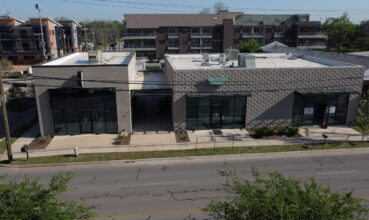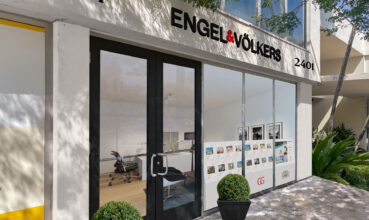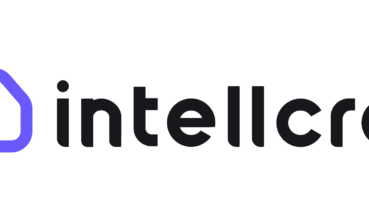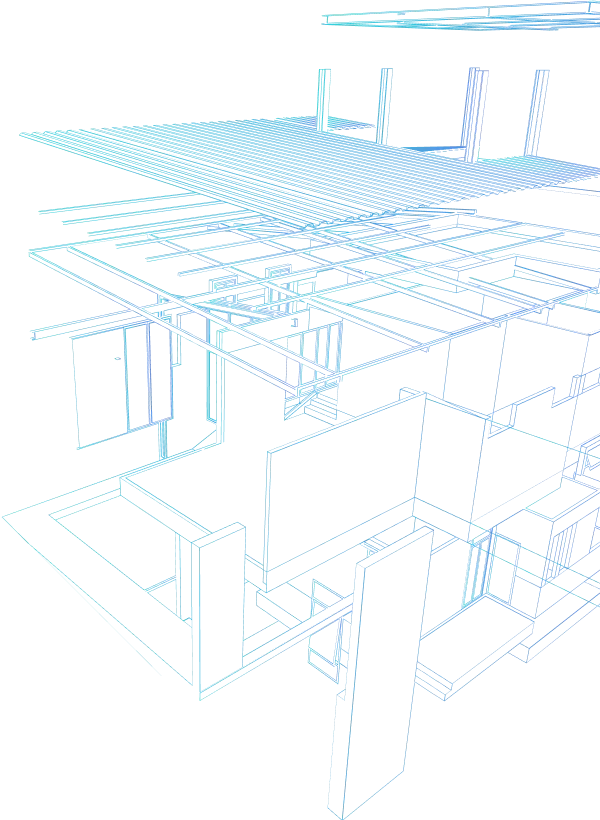The commercial real estate (CRE) industry is making significant advancements in the analysis and valuation of properties, as market pressures compel professionals to reevaluate long-standing...
Bedrock Energy's Joselyn Lai on Making Geothermal Heat Financially Viable for Commercial Real Estate




“Sustainability is not a scalable approach if it’s just about thoughts and feelings and the idea of being green,” says Joselyn Lai, Co-Founder and CEO of Bedrock Energy. “Sustainability is actually something that will grow because you have the dual benefit, or sometimes even triple benefit, of being clean, but also healthier for occupants, and then also financially beneficial.”
This pragmatic approach to sustainability represents the core of what makes Bedrock Energy’s geothermal heating and cooling systems increasingly attractive to commercial real estate owners and developers across the country. Founded in March 2022, the company is changing how the industry approaches geothermal energy by significantly reducing installation costs, minimizing space requirements, and accelerating deployment timeframes.
Beyond Green: The Dollars and Cents of Geothermal
For real estate professionals, the financial case for geothermal is becoming increasingly compelling. According to Lai, property owners implementing geothermal systems can potentially save between 50 cents and $1 per square foot in operating income.
“Depending on your cap rate, you could be adding something like $10-15 in value per square foot of your property, which could be millions of dollars if you’re looking to flip or sell off this asset in some years,” Lai explains.
The fundamental value proposition of geothermal is straightforward: it harnesses free thermal energy from the ground to significantly reduce heating and cooling costs, which represent a substantial portion of a building’s energy consumption.
“You’re getting free thermal energy from the ground right on your property,” says Lai. “It’s not just about the rents you get from what’s above your property, but you can get thermal energy for free from underneath it.”
Overcoming Traditional Barriers to Adoption
Despite these advantages, traditional geothermal installations have faced significant hurdles in commercial applications. High upfront costs, long payback periods, extensive space requirements, and construction delays have historically limited widespread adoption.
“Historically, people would say, ‘That is a $4 million addition to my campus, or that’s a million-dollar addition to this building,'” Lai notes. “The payback period for that geothermal installation will be about 20 years because the installation is so expensive.”
This is where Bedrock Energy’s technological innovations are changing the equation. By bringing robotic and automated drilling technologies from the oil and gas industry into urban geothermal applications, the company is addressing these long-standing obstacles.
“What Bedrock does is give you that same geothermal installation, but we make it cheaper, make it take up less space, do it faster so it doesn’t create delays in your construction process,” explains Lai. “Ultimately, we install the system with less hassle, so you can get this beautiful, top-tier HVAC system for less cost and with shorter payback periods.”
Ideal Applications and Markets
Bedrock Energy is seeing particularly strong traction in several key market segments:
Power-Constrained Markets: In regions where buildings are increasingly electrifying their heating and cooling systems but facing grid capacity limitations, geothermal offers a path forward.
“You have this warehouse, for example, and you need 12 megawatts. But your utility says you can have those 12 megawatts in 2030,” Lai explains. “We can help you shave your power demands with geothermal being so efficient on your heating and cooling that you can self-serve more of your energy needs, and you can occupy or operate your site earlier.”
Markets with Strong Utility Incentives: Some utilities are offering substantial financial incentives for geothermal installations as a cost-effective alternative to expanding transmission, distribution, and generation capacity.
“I would rather pay a million dollars to abate a megawatt of power, rather than go pay $5 million to add more distribution, transmission, and generation,” is how Lai characterizes the utility perspective in these markets. “In those situations, there’s really, really good incentives, and then the payback period is like two years for the real estate owner.”
Properties with High Thermal Loads: Buildings with continuous heating and cooling demands, such as multifamily residential and hospitality properties, stand to benefit most from geothermal systems.
“If you have 24/7 heating and cooling load because you are hospitality or multi-family, there’s just heating and cooling happening at all hours of the day. That is certainly an area where we really focus,” says Lai.
Long-Hold or Value-Add Properties: Real estate owners with extended investment horizons or value-add strategies are particularly well-positioned to capitalize on geothermal’s benefits.
“These are folks who would say, ‘I get involved in thinking about value-add improvements, and geothermal or any kind of energy resiliency is actually a really positive operational thing that would improve my net operating income and increase my property value,'” Lai notes.
The Resilience Premium
Beyond direct energy savings, geothermal systems offer significant resilience benefits that are increasingly valued in today’s volatile energy landscape.
“Geothermal is obviously really pertinent in cities where you’re increasingly seeing weather extremes, winter polar vortexes, hot summers that are like 115 degrees,” Lai observes. In these environments, geothermal provides protection against brownouts, blackouts, and extreme price spikes.
“There are times when the cost per kilowatt hour increases by 1,000% in Texas during a winter storm,” Lai points out. “Resiliency means making yourself more immune to those power price increases, those demand charges that impact commercial and industrial customers, or simply keeping your residents and occupants safe when grid-powered heating and cooling could go down.”
Financing Options Expanding
For real estate owners concerned about capital expenditures, Bedrock notes that financing options are expanding as clean energy infrastructure funds increasingly recognize geothermal’s stable returns.
“Increasingly, there’s a lot of infrastructure funds that want to put money into clean energy,” Lai explains. “They’re a little bit less sure about solar right now, but geothermal is this incredibly friendly technology that’s super well-validated, and so it’s also possible to work with a provider that takes care of the upfront cost for you and installs a geothermal system, and all you have is a cleaner, more resilient, more sustainable, higher-value property, and you don’t even have to put in that investment.”
The Longevity Advantage
Unlike many clean energy technologies, geothermal systems offer exceptional longevity, providing value well beyond typical investment horizons.
“These assets can last—my goodness, they can last 100 years,” Lai emphasizes. “Solar lasts 20 years, but a geothermal field really could be the lifetime of the building or longer.”
This extraordinary lifespan further enhances the investment case, particularly for institutional investors with multi-decade horizons.
Looking Ahead
As Bedrock Energy expands its footprint into the Mountain region and Northeast following its recent funding round, the company is focused on reaching property owners who may have previously dismissed geothermal due to cost, space constraints, or installation challenges.
“What we’re saying is, ‘Great, let’s add regional presence so people can see we’re here. And if you had a challenge, or geothermal didn’t financially work, or you felt you didn’t have enough space, come talk to us, because we can solve those problems and make geothermal possible,'” says Lai.
For real estate professionals, the proposition is becoming clear: geothermal is evolving from a supplementary green amenity to a sound financial investment with compelling returns and significant competitive advantages in both marketing and operations. As Bedrock Energy continues to reduce costs and simplify implementation, these advantages will likely become even more significant for forward-thinking property owners.
Similar Articles
Explore similar articles from Our Team of Experts.


As online retail rapidly reshaped consumer behavior, many investors exited the brick-and-mortar space, spooked by the rise of e-commerce. But not George Wommack. In 2007, as e-commerce began...


In the competitive world of South Florida real estate, adaptability and a diverse skill set are key to success. For Marie Gonneville, the Co-Owner of Engel & Völkers Pompano Beach, her ...


In New York City’s commercial real estate world, few names carry as much weight as Bob Knakal. Having personally brokered the sale of over 2,300 buildings valued at more than $22 billi...


In an industry where timing is everything, Craig Merlin knows a thing or two about reading the course. The former PGA professional turned commercial real estate broker has transitioned from ...




